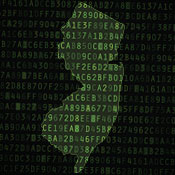Unencrypted Devices Still a Breach Headache
May 13, 2015The Ongoing Risk Posed by Lost, Stolen Mobile Devices

While hacker attacks are grabbing most of the health data breach headlines so far in 2015, a far more ordinary culprit – the loss or theft of unencrypted computing devices – is still putting patient data at risk.
See Also: PHI Security: The Role of Encryption and Tokenization
Incidents involving unencrypted laptops, storage media and other computing devices are still popping up on the Department of Health and Human Services’ “wall of shame,” which lists health data breaches affecting 500 or more individuals. Among the largest of the most recent incidents is a breach at the Indiana State Medical Association.
That breach involved the theft of a laptop computer and two hard drives from a car parked for 2-1/2 hours in an Indianapolis lot, according to local news website, The Star Press. Information on more than 38,000 individuals, including ISMA employees, as well as physicians, their families and staff, was contained in the ISMA group health and life insurance databases on those devices.
The incident occurred on Feb. 3 while ISMA’s IT administrator was transporting the hard drives to an offsite storage location as part of ISMA’s disaster recovery plan, according to The Star Press. An ISMA spokeswoman declined Information Security Media Group’s request to comment on the breach, citing that there are “ongoing civil and criminal investigations under way.”
A breach notification letter sent by ISMA indicates that compromised data included name, address, date of birth, health plan number, and in some cases, Social Security number, medical information and email address. ISMA is offering those affected one year’s worth of free credit monitoring.
Common Culprit
As of Feb. 27, 51 percent of major health data breaches occurring since 2009 involved a theft while 9 percent involved a loss, according to data presented by an Office for Civil Rights official during a session at the recent HIMSS 2015 Conference in Chicago. Of all major breaches, laptop devices were involved in 21 percent of the incidents, portable electronic devices in 11 percent and desktop computers in 12 percent, according to the OCR data.
Two of the five largest breaches to date on the Wall of Shame involved stolen unencrypted computing devices:
- A 2011 breach involving the theft of unencrypted backup computer tapes containing information on about 4.9 million individuals from the car of a Science Applications International Corp. employee who was transporting them between federal facilities on behalf of military health program TRICARE.
- The 2013 theft of four unencrypted desktop computers from an office of Advocate Health and Hospital Corp. in Chicago, which exposed information on about 4 million patients.
Many smaller breaches affecting less than 500 individuals also involve unencrypted computing devices, according to OCR.
Safe Harbor
The thefts and losses of encrypted computing devices are not reportable breaches under HIPAA. That’s why security experts express frustration that the loss and theft of unencypted devices remains a common breach cause.
“It is unfortunate that [encryption] is considered an ‘addressable’ requirement under HIPAA, as many people don’t realize that this does not mean optional,” says Dan Berger, CEO of security risk assessment firm Redspin, which was recently acquired by Auxilio Inc.
Under HIPAA, after a risk assessment, if an entity has determined that encryption is a reasonable and appropriate safeguard in its risk management of the confidentiality, integrity and availability of e-PHI, it must implement the technology. However, if the entity decides that encryption is not reasonable and appropriate, the organization must document that determination and implement an equivalent alternative measure, according to HHS.
Attorney David Holtzman, vice president of compliance at the security consulting firm CynergisTek, says he’s expecting to see soon an OCR resolution agreement with a healthcare provider that suffered several breach incidents caused by their failure to manage the mobile devices used by their employees on which electronic protected health information was stored or accessed.



